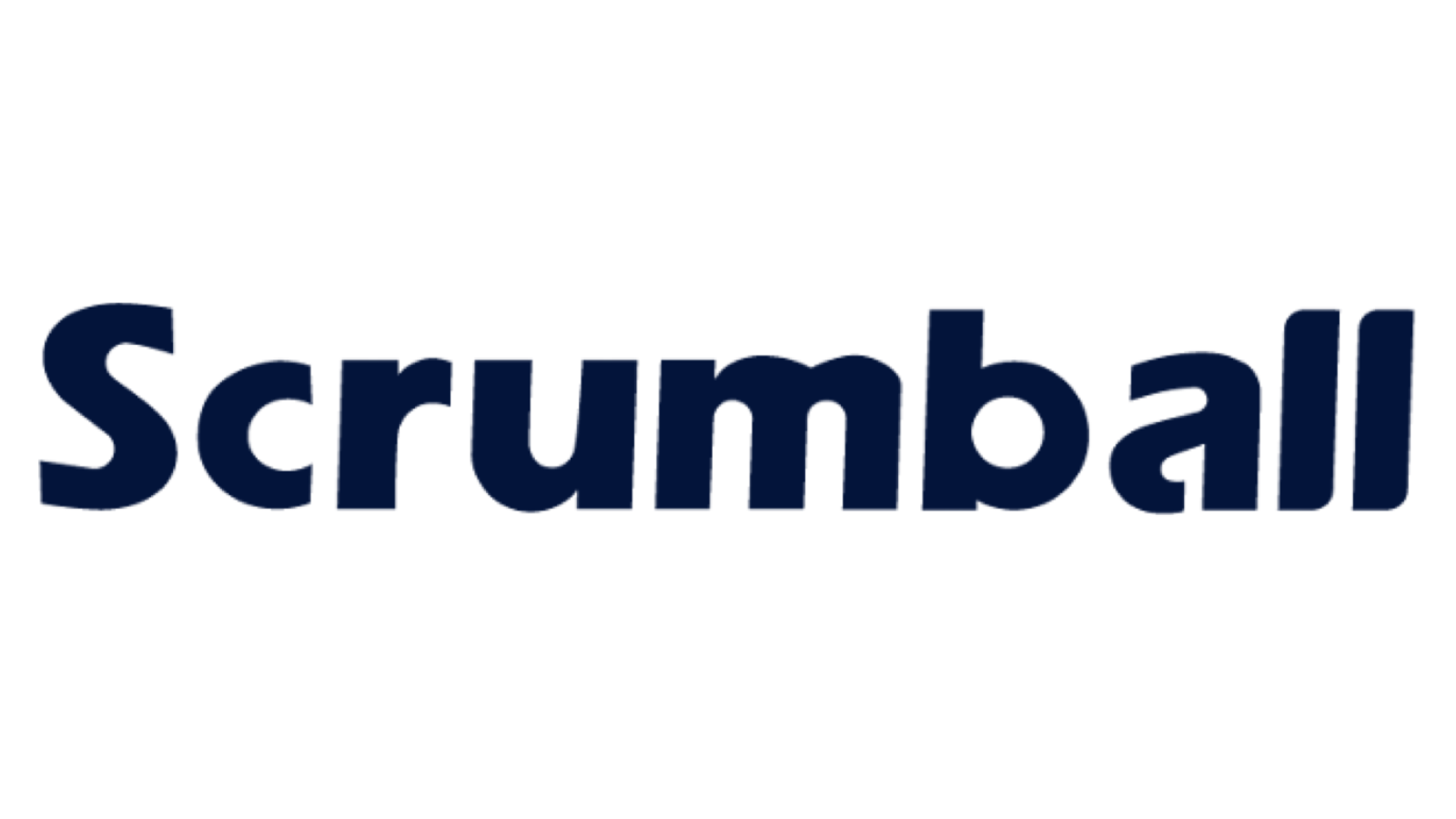7 Steps to Build a Winning Pay Per Click Campaign

If you're looking to grow your business, effective pay per click campaign management can be a game-changer. Why? Because PPC puts your brand right in front of people actively searching for what you offer. It’s not just about visibility—it’s about connecting with the right audience at the right time.
Consider this: 83% of small business owners believe that increasing their pay per click campaign management efforts could significantly boost profits. That’s no surprise when you think about the benefits. PPC offers immediate visibility, measurable results, and precise targeting. Whether you’re aiming for local customers or a broader audience, it helps you reach them efficiently. Plus, with its budget control and remarketing capabilities, pay per click campaign management ensures you get the most bang for your buck.
Ready to take your business to the next level? Let’s dive into how you can create a winning PPC strategy that drives results.
Define Goals for Effective PPC Strategy
Before diving into your PPC campaigns, you need to define your goals. Why? Because clear goals act as a roadmap, guiding every decision you make. Without them, you risk wasting time and money on strategies that don’t deliver results. Let’s break this down step by step.
Align Goals with Business Objectives
Your PPC goals should always tie back to your broader business objectives. Think about what you want to achieve. Are you looking to increase website traffic, generate leads, or boost sales? Here are some common PPC goals businesses set:
- Increasing traffic to build brand awareness and measure engagement.
- Driving leads by converting visitors into potential customers.
- Building brand awareness through display ads.
- Generating revenue by targeting users ready to make a purchase.
When your PPC goals align with your overall objectives, you create a cohesive digital marketing strategy. This alignment ensures your efforts stay relevant and measurable. Regularly revisit these goals to adapt to any changes in your business needs.
Identify Key Performance Indicators (KPIs)
Once you define your goals, it’s time to measure success. That’s where KPIs come in. These metrics help you track performance and identify what’s working. Some essential KPIs for PPC campaigns include:
- Click-Through Rate (CTR)
- Conversion Rate
- Cost Per Acquisition (CPA)
- Return on Investment (ROI)
- Quality Score
For example, if your goal is to drive leads, focus on metrics like CPA and conversion rate. Tracking the right KPIs ensures you’re maximizing success and staying on track.
Set Realistic and Measurable Targets
Setting goals is great, but they need to be realistic and measurable. Use the SMART framework: Specific, Measurable, Achievable, Relevant, and Time-bound. Start by analyzing your current PPC performance. What’s working? What’s not? Then, break your goals into smaller, manageable targets. For instance, if you aim to increase conversions by 20%, assign specific tasks to campaigns, ad groups, and keywords.
Avoid common mistakes like mismatched objectives and bidding strategies. If your goal is to drive traffic, ensure your bidding strategy supports that. Clear, measurable goals keep your PPC strategy focused and effective.
Pro Tip: Regularly review your goals and KPIs. PPC is dynamic, and adapting to changes is key to maximizing success.
Conduct Keyword Research for Pay Per Click Campaign Management
Keyword research is the backbone of any successful pay per click campaign management strategy. It helps you identify the search terms your audience uses, ensuring your ads appear in front of the right people. Let’s explore how to conduct comprehensive keyword research effectively.
Use Keyword Research Tools
The right tools make keyword research easier and more accurate. They help you uncover search terms with high potential and provide insights into search volume, competition, and cost-per-click (CPC). Here are some tools you should consider:
- Google Keyword Planner: A free tool that offers keyword suggestions, search volume data, and CPC estimates.
- SEMrush: A powerful platform for keyword research and competitive analysis.
- Ahrefs: Known for its focus on competitor analysis and detailed keyword insights.
Using these tools, you can build a strong foundation for your ppc campaigns. They’ll help you find the keywords that align with your goals and budget.
Focus on High-Intent Keywords
Not all keywords are created equal. High-intent keywords are the ones you want to prioritize. These are search terms that indicate a user is ready to take action, like making a purchase or signing up for a service. Why are they so important?
- They connect you with users who are actively looking for what you offer, increasing the chances of conversion.
- They help you manage costs by focusing on terms that deliver better results for your ad spend.
- They improve ad relevance, boosting your click-through rate (CTR) and overall performance.
High-intent keywords often fall into categories like transactional (e.g., “buy running shoes”) or navigational (e.g., “Nike store near me”). By targeting these, you’ll attract quality leads and avoid wasting money on general terms that don’t convert.
Organize Keywords into Ad Groups
Once you’ve identified your keywords, it’s time to organize them. Grouping keywords into tightly themed ad groups ensures your ads are relevant to the search queries they target. Here’s how to do it:
- Create ad groups based on specific products or services.
- Use similar keywords within each group to maintain focus.
- Write ads that directly match the intent of the grouped keywords.
This approach improves your quality score, which can lower your CPC and increase ad visibility. Well-organized ad groups also make it easier to track performance and optimize your pay per click campaign management efforts.
Pro Tip: Regularly review and refine your keyword groups. Search trends change, and staying updated keeps your campaigns effective.
Targeting the Right Audience

Getting your ads in front of the right people is the heart of any successful PPC campaign. Effective targeting ensures your message resonates with the audience most likely to engage with your brand. Let’s explore how you can refine your approach.
Define Your Ideal Customer Profile
Before you start targeting, you need to know who you’re trying to reach. Defining your ideal customer profile helps you focus your efforts on the people who matter most to your business. Here’s how you can do it:
- Segment your audience by demographics like age, gender, income, and education.
- Analyze behaviors such as purchasing habits and brand loyalty.
- Dive into psychographics, including values, interests, and lifestyles.
Creating detailed buyer personas can also help. Conduct market research to gather data about your audience. Identify their needs, challenges, and motivations. This process ensures your PPC campaigns speak directly to your customers’ desires.
Leverage Audience Segmentation
Audience segmentation takes your targeting to the next level. By dividing your audience into smaller, specific groups, you can tailor your ads to meet their unique needs. Why does this matter?
- It helps you understand where your customers are in their buyer journey.
- It ensures your ad spend goes toward reaching the right people, making your campaigns more cost-effective.
- It increases the chances of converting high-quality leads, which can boost customer loyalty.
For example, you might create separate campaigns for first-time visitors and returning customers. This approach allows you to deliver personalized messages that resonate with each group, improving your PPC results.
Use Geo-Targeting and Demographics
Geo-targeting and demographic data are powerful tools for refining your PPC strategy. By focusing on specific locations and audience characteristics, you can maximize your ad performance. Here’s how:
- Show ads to users in relevant locations to increase engagement and conversions.
- Tailor your messaging based on local preferences to enhance user experience.
- Avoid wasting ad spend by excluding areas or demographics that don’t align with your goals.
For instance, if you run a local business, targeting users within a specific radius ensures your ads reach potential customers nearby. This strategy not only improves click-through rates but also strengthens your local presence, helping you compete with nearby businesses.
Pro Tip: Regularly review your targeting settings. As your business grows, your ideal audience may evolve, and staying updated ensures your PPC campaigns remain effective.
Create Ads for a Successful PPC Campaign
Creating ads that grab attention and drive action is the cornerstone of a successful PPC campaign. Your ads need to stand out in a crowded space while delivering a clear and compelling message. Let’s break down how you can craft ads that convert.
Write Attention-Grabbing Headlines
Your headline is the first thing people notice. It’s your chance to make a strong impression. To create headlines that grab attention:
- Use concise, compelling language that speaks directly to your audience.
- Start with action verbs to address user needs, like "Discover" or "Save."
- Incorporate numbers to add specificity and urgency, such as "50% Off Today Only!"
- Create curiosity with intriguing statements that make users want to learn more.
- Include relevant keywords to ensure your ad aligns with search intent.
- Highlight unique selling points or benefits that set you apart.
- Test different variations to see what resonates best.
For example, instead of saying "Running Shoes Available," try "Find Your Perfect Running Shoes – Free Shipping Today!" This approach connects with the user’s intent and encourages clicks.
Craft Persuasive Ad Copy
Once your headline grabs attention, your ad copy needs to seal the deal. Focus on creating engaging advertisement text that speaks to your audience’s needs. Here’s how:
- Use keywords that match what people are searching for. This improves relevance and boosts your quality score.
- Tailor your copy to user intent. If someone searches for "best laptops for students," your ad should highlight features like affordability and portability.
- Keep your message clear and concise. Avoid jargon and focus on benefits.
Understanding user intent is key. If someone searches for "affordable wedding venues," they’re likely ready to book. Your ad should emphasize cost-effective options and easy booking processes to drive conversions.
Use Strong Calls-to-Action (CTAs)
A strong CTA tells users exactly what to do next. To make your CTAs effective:
- Keep them short and clear. Use one CTA per ad to avoid confusion.
- Use strong action verbs like "Shop," "Download," or "Get Started" to create urgency.
- Tailor your CTA to the audience’s stage in the funnel. For example, "Learn More" works for awareness, while "Buy Now" suits ready-to-purchase users.
For instance, if you’re promoting a free trial, a CTA like "Start Your Free Trial Today" encourages immediate action. Avoid vague phrases like "Click Here" that don’t provide value.
By combining attention-grabbing headlines, engaging advertisement text, and strong CTAs, you’ll create ads that not only attract clicks but also drive meaningful results.
Optimize Landing Pages for Conversions

Your PPC campaign doesn’t end with a click. To turn visitors into customers, you need to optimize your landing pages for conversions. A well-designed landing page ensures users find exactly what they’re looking for, making it easier for them to take action.
Ensure Landing Page Relevance to Ads
Relevance is everything when it comes to landing page optimization. If your landing page doesn’t match the promise of your ad, users will leave. Here’s how you can ensure relevance:
- Align your landing page content with the ad copy. This creates a seamless experience for users.
- Include a clear and prominent call-to-action (CTA) that guides visitors on what to do next.
- Optimize for mobile-friendliness and fast loading times.
The most critical piece when developing a PPC landing page is relevance. Ensuring that the landing page content is directly relevant to the ad that brought the user there significantly improves conversion rates.
For example, if your ad promotes a 20% discount on running shoes, your landing page should highlight that offer prominently. This alignment builds trust and encourages users to stay.
Focus on User Experience (UX) and Design
A great user experience can make or break your PPC landing page. Visitors expect a smooth, intuitive design that helps them find what they need quickly.
| Loading Time | Conversion Rate |
|---|---|
| < 1 second | 32% |
| 1 second | 20% |
| 2 seconds | 12-13% |
| 5 seconds | Lowest point |
To improve UX:
- Make your landing page responsive so it works well on any device.
- Use clear, easy-to-read content that gets straight to the point.
- Test your page’s usability to identify and fix any pain points.
When users have a positive experience, they’re more likely to convert. On the other hand, poor UX can drive them to competitors.
Include Clear CTAs and Conversion Elements
Your landing page should guide visitors toward taking action. Strong CTAs and conversion-focused elements are essential.
- Use personalized CTAs, as they perform 202% better than generic ones.
- Place your CTA button strategically, such as at the bottom of the page, to increase conversions by 304%.
- Simplify forms by asking only for essential information.
- Add trust signals like testimonials or client logos to build credibility.
- Create urgency with limited-time offers to encourage immediate action.
Relevance is key here. The more your landing page speaks to the user’s needs, the higher your chances of converting them. By focusing on these elements, you’ll optimize your landing pages and get the most out of your PPC campaigns.
Set Budget and Bidding Strategy for PPC Campaign Strategy
Managing your budget and bidding strategy is a critical part of any successful ppc campaign strategy. Without proper planning, you risk overspending or missing out on valuable opportunities. Let’s break it down step by step.
Determine Your Daily and Monthly Budget
Setting a clear budget helps you control your spending and maximize your return on investment. Start by deciding how much you’re willing to spend daily and monthly. Here are a few ways to approach this:
- Use prior-year budgeting. Look at last year’s ppc performance to guide your new budget.
- Try percentage-of-sales budgeting. Tie your ad spend to a percentage of your total revenue. This method keeps your budget flexible.
- Consider objective-based budgeting. Plan for events like product launches or seasonal promotions that may require more ad spend.
Once you’ve set your budget, allocate funds wisely. Focus more on high-performing campaigns and reduce spending on those that need improvement. Remember, daily budgets are averages, not strict limits. If you see a "Limited by budget" notice, it means your ads aren’t showing all day. Adjust your budget to avoid this issue and ensure your campaigns run smoothly.
Choose the Right Bidding Strategy
Your bidding strategy determines how you pay for ads and achieve your goals. Choosing the right one depends on your objectives. Here are some common strategies:
- CPC (Cost Per Click): Pay for each click on your ad.
- CPM (Cost Per Mille): Pay for every thousand impressions.
- Target CPA: Focus on a specific cost per acquisition.
- Target ROAS: Aim for a specific return on ad spend.
- Maximize Conversions: Get the highest number of conversions within your budget.
- Target Impression Share: Ensure your ad appears in a specific percentage of searches.
For example, if you want to drive sales, Target ROAS or Maximize Conversions might work best. If your goal is brand awareness, CPM or Target Impression Share could be more effective. Test different strategies to see what delivers the best results for your ppc campaign strategy.
Monitor and Adjust Bids Regularly
Setting your bids is just the beginning. To keep your campaigns performing well, you need to monitor and adjust them regularly. Start by auditing your campaigns to identify underperforming keywords. Reallocate your budget to focus on high-performing ones.
Follow these best practices:
- Set bids based on your customer lifetime value and conversion goals.
- Watch conversion rates closely. Increase bids for keywords that drive results.
- Use CTR metrics to identify ads that need improvement. Pause or modify low-performing ones.
- Analyze CPC data to find inefficient keywords and adjust bids accordingly.
Regular adjustments ensure your ppc campaigns stay competitive. As market conditions change, staying proactive helps you get the most out of your budget.
Pro Tip: Schedule weekly reviews of your campaigns. Small tweaks can lead to big improvements over time.
Track and Optimize Pay Per Click Campaign Performance
Tracking and optimizing your PPC campaigns is essential to ensure they deliver the best results. By keeping a close eye on performance and making adjustments, you can manage ppc campaigns effectively and maximize your return on investment. Let’s explore how you can monitor and evaluate performance while refining your strategy.
Use Analytics Tools to Monitor Results
Analytics tools are your best friends when it comes to tracking PPC performance. They help you measure key metrics and understand what’s working. Here are some tools you should consider:
- AgencyAnalytics: This tool provides a unified dashboard for monitoring campaigns. It offers customizable reporting features and automated scheduling, making it easier to stay on top of your data.
- Google Analytics: A must-have for tracking conversions and setting up goals. It allows you to measure website traffic and assess how well your PPC campaigns are performing.
To get the most out of these tools, focus on features like custom reporting, A/B testing capabilities, and AI-driven optimization suggestions. These features help you analyze and optimize your campaigns efficiently.
Identify Areas for Improvement
Even the best campaigns have room for improvement. Start by identifying common issues that might be holding you back:
- Low click-through rates
- High cost-per-click
- Poor quality scores
- Ineffective keyword selection
- Weak ad copy
- Inadequate landing pages
By addressing these areas, you can improve your campaign optimization efforts. For example, if your click-through rate is low, consider revising your ad copy or targeting more relevant keywords. Regularly monitor and evaluate performance to spot these issues early.
Test and Refine Ads and Keywords
Testing is a crucial part of managing PPC campaigns. It helps you find what resonates with your audience and improves overall performance. Here’s how you can refine your strategy:
- Use competitive analysis tools like SEMrush to identify keyword opportunities and gaps.
- Try dynamic keyword insertion to personalize your ad copy and boost relevance.
- Optimize your landing pages to align with your keywords and ad copy.
- Conduct A/B testing to experiment with different ad variations and keywords.
- Monitor click-through rates to identify underperforming ads and make timely adjustments.
For example, if one version of your ad outperforms another during A/B testing, focus on the winning elements to enhance future campaigns. Testing and refining ensure your PPC strategy stays sharp and effective.
Pro Tip: Regularly analyze and optimize your campaigns. Small tweaks, like adjusting keywords or improving ad copy, can lead to significant improvements over time.
Building a successful PPC campaign involves mastering seven interconnected steps: conducting keyword research, crafting engaging ads, optimizing landing pages, setting a realistic budget, using ad extensions, leveraging remarketing, and monitoring performance. Each step supports the next, creating a seamless strategy that drives results.
Continuous monitoring and optimization are vital for success. Regularly analyzing metrics helps you spot what’s working and refine your approach. Adjusting bids, keywords, and targeting ensures your campaigns stay competitive and deliver maximum ROI.
Now it’s your turn! Apply these strategies, stay proactive, and watch your PPC campaigns transform into powerful growth engines for your business.
FAQ
What is PPC, and how does it work?
PPC stands for Pay Per Click. It’s an advertising model where you pay only when someone clicks your ad. You bid on keywords, and your ad appears in search results or on websites. It’s a fast way to drive traffic and generate leads.
How much should I spend on a PPC campaign?
Your budget depends on your goals and industry. Start small, monitor results, and adjust as needed. Tools like Google Ads provide insights to help you decide. Focus on high-performing campaigns to maximize your return on investment.
How do I know if my PPC campaign is successful?
Track metrics like click-through rate (CTR), conversion rate, and cost per acquisition (CPA). Use analytics tools to monitor performance. If your campaign meets your goals, like generating leads or increasing sales, it’s working. Regular optimization keeps it on track.
Can I run a PPC campaign without experience?
Yes, but it’s better to learn the basics first. Platforms like Google Ads offer tutorials. Start with small campaigns, test strategies, and refine as you go. Hiring a professional or agency can also help if you’re unsure.
How often should I optimize my PPC campaigns?
You should review your campaigns weekly. Look at performance metrics, adjust bids, and refine keywords. Regular tweaks ensure your ads stay competitive and effective. PPC is dynamic, so staying proactive is key to success.
Pro Tip: Use A/B testing to experiment with different ad variations. It’s a great way to find what works best for your audience.
See Also
7 Key Steps for Crafting an Effective Influencer Strategy
7 Crucial Steps for Determining Content Marketing Returns
Successfully Navigating Your Initial Sponsored Content Experience
